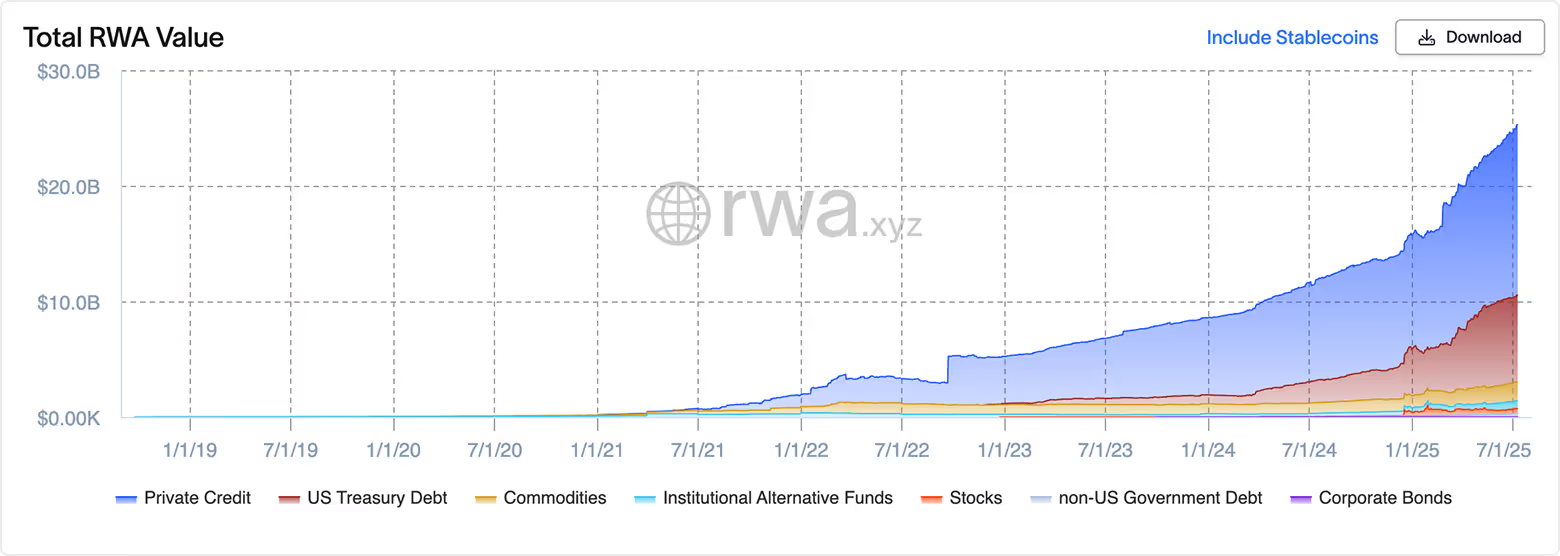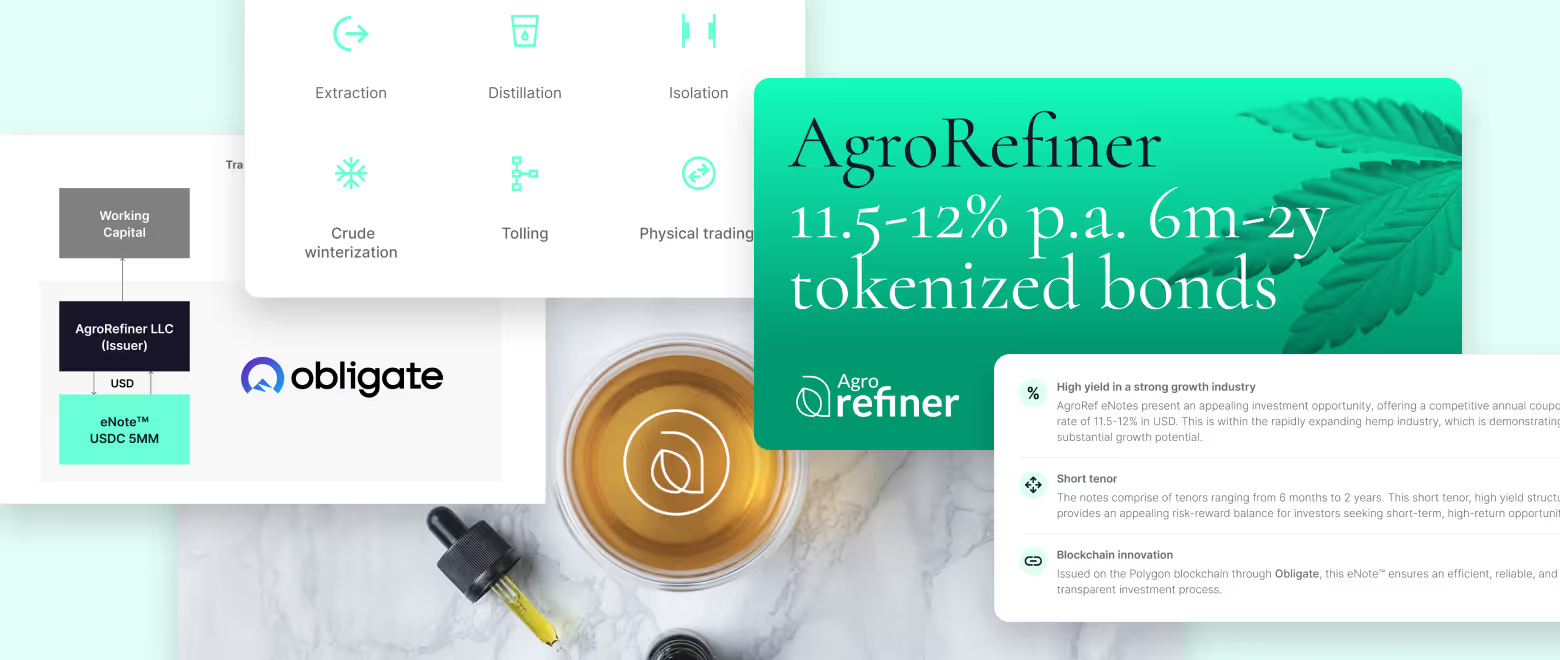

Tokenization is coming for capital markets | AI generated image by XBTO
Tokenization is coming for capital markets | AI generated image by XBTO

Tokenization is rapidly emerging as a foundational shift in how global capital markets operate. According to BCG, tokenized assets could represent up to $16 trillion in value by 2030, spanning everything from real estate and private credit to collectibles and infrastructure. Meanwhile, recent data from RWA.xyz shows the market capitalization of tokenized real-world assets has already grown more than sevenfold since 2022, surpassing $20 billion today.
These numbers signal a profound change: markets traditionally reserved for institutions or insiders - like revenue-share bonds or tokenized private debt - are now becoming investable by a wider range of participants, giving investors direct exposure to new sources of yield and portfolio diversification.
But the opportunity goes beyond simply putting assets on a blockchain. Tokenization is pushing markets away from legacy systems weighed down by paper contracts, slow settlement, and costly intermediaries, toward blockchain-powered infrastructure where assets are programmable, ownership is transparent, and transactions, including settlement, happen in real time.
As adoption accelerates, one thing is clear: issuing more digital assets alone isn’t enough. The true potential of tokenization - deep liquidity, global accessibility, and seamless integration - depends on building networks where these assets can trade freely, interact with traditional and digital financial products, and move within a unified market ecosystem.
In this edition of The WIRE, we explore why tokenization isn’t just digitization, what needs to happen for tokenized markets to deliver on their promise, and real-world examples already demonstrating both the progress made and the work ahead.
To dive deeper, download our latest whitepaper on tokenization for a comprehensive analysis of the opportunities and challenges in this rapidly evolving space.
What are the challenges in today’s capital markets
For decades, traditional capital markets have been defined by structural inefficiencies that raise costs, limit access, and slow progress, keeping many investors on the sidelines.
- Slow, complex processes: Buying or selling assets like real estate or private equity often takes weeks of paperwork, back-and-forth negotiations, and approvals from multiple intermediaries, wasting time and eroding returns.
- Limited access: High investment minimums and accreditation requirements lock out most investors, confining opportunities in private markets to a small circle of institutions and the ultra-wealthy.
- Opaque ownership: Layers of brokers and custodians obscure who truly owns what, adding uncertainty, complexity, significant costs and risk for investors.
- Manual, slow settlement: Custody and settlement rely on outdated systems with T+2 (or longer) timelines, tying up investor capital and preventing quick reinvestment.
- Illiquidity: Assets like private equity stakes, art, or property often force all-or-nothing sales, offering no easy way for investors to unlock partial liquidity or exit flexibly.
- High costs and friction: Settlement delays, manual processes, and intermediary fees erode value and tie up capital that could be used more productively.
- Legacy infrastructure: Traditional systems are fragmented and siloed, lacking the real-time connectivity needed in today’s global economy.
These problems raise costs, hinder market growth, and exclude broad investor participation. They block access to unique opportunities, reduce efficiency, and limit the ability to diversify into promising assets.
Beyond digitization: How tokenization redefines ownership
Tokenization goes far beyond digitization. By turning assets into programmable, blockchain-native tokens, tokenization changes how ownership works at its core:
- Programmable assets: Tokenized assets can embed rules directly into smart contracts, automating payments, distributions, and compliance checks without manual intervention.
- Direct ownership: Investors can hold tokens representing fractions of assets directly in their wallets, eliminating layers of custodians and brokers and clarifying who owns what in real time.
- Instant settlement: Instead of waiting days or weeks, transactions can settle in minutes or seconds, freeing up capital for both issuers and investors.
- Global access: Tokenized assets can be offered to a broader pool of investors worldwide, enabling issuers to reach beyond their local markets and investors to diversify into previously inaccessible asset classes.
For investors, this means unprecedented flexibility, greater transparency, and more opportunities to participate in high-quality assets traditionally out of reach, all with faster execution and fewer middlemen.
From Tokenization 1.0 to 2.0: Moving beyond islands
The first wave of tokenization showed that assets like bonds, real estate, and treasuries could be represented digitally. But many early projects created isolated silos - tokens stuck on a single platform with limited liquidity and investor access. As experts note, “When tokenized assets are shackled within individual silos, they’re rendered stagnant,” simply replicating old inefficiencies in digital form.
The next phase, Tokenization 2.0, must transform these islands into an integrated ecosystem. Tokenized assets need to move seamlessly across platforms, interact with other financial products, and connect with traditional finance to deliver on promises like 24/7 trading and instant settlement.
Building this requires:
- Interoperability standards: Protocols like ERC-3643 ( a token standard on the Ethereum blockchain designed specifically for permissioned tokenized assets) let assets trade across venues without custom integrations.
- Composability: Tokens must integrate with DeFi and other financial apps, enabling use as collateral or in index products.
- Bridges to traditional finance: Connections to established custody, settlement, and compliance systems are key to building trust and unlocking institutional capital.
As the World Economic Forum noted in 2025, convergence between digital and traditional finance offers “unprecedented efficiency, liquidity, and interoperability.” But this vision will only materialize if isolated token islands become part of a unified market.
Real deals, real impact: Proof points in motion
Investors no longer have to imagine the promise of tokenization - it’s already delivering real opportunities to access assets once off-limits:
Real deals, real impact: Proof points in motion
These cases prove tokenization’s power to bring unique, yield-generating, or diversifying assets to investors, but also show that unlocking full investor value requires connecting these tokens to integrated, liquid markets.
The next big opportunity: Integrated, liquid markets
The real promise of tokenization lies in moving beyond isolated assets to integrated, liquid markets. Investors will benefit when tokenized stocks, bonds, and private assets can trade alongside traditional securities in unified marketplaces with active secondary trading, collateral mobility, and composability with DeFi and other financial applications.
As interoperability standards, regulatory clarity, and custodial solutions advance, tokenized assets will become as practical and attractive as traditional assets, but with advantages like 24/7 markets, programmable compliance, and transparent ownership.
What investors should prioritize now
For investors ready to harness these opportunities, focus on:
- Liquidity and interoperability: Seek assets designed for circulation across platforms, maximizing your ability to buy, sell, and use them as markets mature.
- Compliance-ready standards: Favor tokens issued with protocols like ERC-3643, ensuring they meet global regulatory requirements and integrate seamlessly across venues.
- Trusted custody and bridges: Prioritize offerings with secure custody and settlement infrastructure that connect tokenized assets to traditional capital markets, a critical factor in making them reliable, tradable parts of your portfolio.
For the first time, people anywhere in the world can hold a piece of a tokenized stock or bond as easily as cash - able to send it, save it, spend it, or use it as collateral, all from their wallet, instantly and without borders or intermediaries. Tokenization is leveling the playing field, giving anyone with a smartphone a way to participate in global wealth creation: to invest and build financial security.
The full breakdown
In our first article, "Navigating Crypto Volatility: The Advantages of Active Management," we explored how the high volatility and low correlation of digital assets with traditional asset classes create unique opportunities for active managers. We discussed how these characteristics enable active managers to execute tactical trading strategies, capitalizing on short-term price movements and market inefficiencies. Building on that foundation, we now turn our attention to the unique market microstructure of digital assets.
Conducive market microstructure of digital assets
The market microstructure of digital assets - a framework that defines how crypto trades are conducted, including order execution, price formation, and market interactions - sets the stage for active management to thrive. This unique ecosystem, characterized by its continuous trading hours, diverse trading venues, and substantial market liquidity, offers several advantages for active management, providing a fertile ground for sophisticated investment strategies.
24/7/365 market access
One of the defining characteristics of digital asset markets is their continuous, round-the-clock operation.
Unlike traditional financial markets that operate within specific hours, cryptocurrency markets are open 24 hours a day, seven days a week, all year round. This continuous trading capability is particularly advantageous for active managers for several reasons:
- Immediate response to market events: Unlike traditional markets that close after regular trading hours, digital asset markets allow managers to react immediately to breaking news or events that could impact asset prices. For instance, if a significant economic policy change occurs over the weekend, managers can adjust their positions in real-time without waiting for markets to open.
- Managing volatility: Continuous trading provides more opportunities to capitalize on price movements and volatility. Active managers can take advantage of this by implementing strategies such as short-term trading or hedging to mitigate risks and lock in gains whenever market conditions change. For instance, if there’s a sudden drop in the price of Bitcoin, managers can quickly sell their holdings to minimize losses or buy in to capitalize on the lower prices.
Variety of trading venues
The proliferation and variety of trading venues is another crucial element of the digital asset market structure. The extensive landscape of over 200 centralized exchanges (CEX) and more than 500 decentralized exchanges (DEX) offers a wide array of platforms for cryptocurrency trading. This diversity is beneficial for active managers in several ways:
- Risk management and diversification: By spreading trades across various exchanges, active managers can mitigate counterparty risk associated with any single platform. Additionally, the ability to trade on both CEX and DEX platforms allows managers to diversify their strategies, incorporating different levels of decentralization, regulatory environments, and security features.
- Arbitrage opportunities: Different venues often exhibit price discrepancies, presenting arbitrage opportunities. For example, managers can buy an asset on one exchange at a lower price and sell it on another where the price is higher, thus generating risk-free profits.
- Access to diverse liquidity pools: Multiple trading venues provide access to diverse liquidity pools, ensuring that managers can execute large trades without significantly impacting the market price.
Spot and derivatives markets (Variety of instruments)
The seamless integration of spot and derivatives markets within the digital asset space presents a considerable advantage for active managers. With substantial liquidity in both markets, they can implement sophisticated trading strategies and manage risk more effectively.
For instance, as of August 8 2024, Bitcoin (BTC) boasts a daily spot trading volume of $40.44 billion and an open interest in futures of $27.75 billion. Additionally, derivatives such as futures, options, and perpetual contracts enable managers to hedge positions, leverage trades, and employ complex strategies that can amplify returns.

Overall, the benefits for active managers include:
- Hedging and risk management: Derivatives offer a powerful tool for hedging against unfavorable price movements, enabling more efficient risk management. For instance, a manager holding a substantial amount of Bitcoin in the spot market can use Bitcoin futures contracts to safeguard against potential price drops, thereby enhancing risk control.
- Access to leverage: Managers can use derivatives to leverage their positions, amplifying potential returns while maintaining control over risk exposure. For instance, by employing options, a manager can gain exposure to an underlying asset with only a fraction of the capital needed for a direct spot purchase, thereby enabling more capital-efficient investment strategies.
- Strategic flexibility: By integrating spot and derivatives markets, managers can implement sophisticated strategies designed to capitalize on diverse market conditions. For instance, they may engage in volatility selling, where options are sold to generate income from market volatility, regardless of price direction. Additionally, managers can leverage favorable funding rates in perpetual futures markets to enhance yield generation. Basis trading, another strategy, involves taking offsetting positions in spot and futures markets to profit from price differentials, enabling returns that are independent of market movements.
Exploiting market inefficiencies
Digital asset markets, being relatively nascent, are less efficient compared to traditional financial markets. These inefficiencies arise from various factors, including regulatory differences, market segmentation, and varying levels of market maturity. For example:
- Pricing anomalies: Phenomena like the "Kimchi premium," where cryptocurrency prices in South Korea trade at a premium compared to other markets, create arbitrage opportunities. Managers can exploit these by buying assets in one market and selling them in another at a higher price.
- Exploiting mispricings: Active managers can identify and capitalize on mispricings caused by market inefficiencies, using strategies such as statistical arbitrage and mean reversion.
The unique aspects of the digital asset market structure create an exceptionally conducive environment for active management. Continuous trading hours and diverse venues provide the flexibility to react quickly to market changes, ensuring timely execution of trades. The availability of both spot and derivatives markets supports a wide range of sophisticated trading strategies, from hedging to leveraging positions. Market inefficiencies and pricing anomalies offer numerous opportunities for generating alpha, making active management particularly effective in the digital asset space. Furthermore, the ability to hedge and manage risk through derivatives, along with exploiting uncorrelated performance, enhances portfolio resilience and stability.
In our next article, we'll delve into the various techniques active managers employ in the digital asset markets, showcasing real-world use cases.
Read full disclaimer














